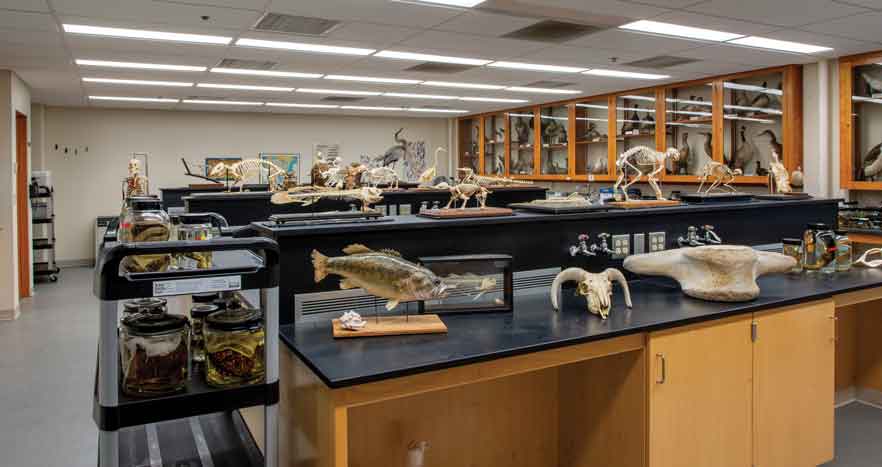Spaces: Comparative Vertebrate Anatomy Lab

Displays of taxidermy animals, skeletons and jars of preserved reptiles are more than decoration in Whitman College’s “CVA Lab.”
At first glance, Room 213 in Whitman’s Hall of Science looks like a small natural history museum: Illustrated species identification posters and cabinets full of taxidermy birds line the walls, skeletons of fish, small mammals and more birds perch atop raised platforms, and jars of preserved reptiles crowd the shelves.
Professor of Biology Kate Jackson, who uses the room for her Comparative Vertebrate Anatomy and Herpetology labs, knows some may recoil at the sight: “To a person stumbling in unexpectedly, it’s a bit creepy—there are things that are dead, things in jars, skeletons and so forth,” she says.
However, Jackson (pictured below with her pet boa constrictor, Cookie) sees it differently. This is not a museum or macabre—it’s where biology students come for hands-on investigation and learning. “For my students and I, what we get from the space is a depth and intensity of knowledge,” she says. “It’s a space where students come for three hours at a time, every week for an entire semester and lose themselves in a dissection. It’s a kind of deep immersion in study, which I think is increasingly rare in a world of shortened attention spans and cell phones.”